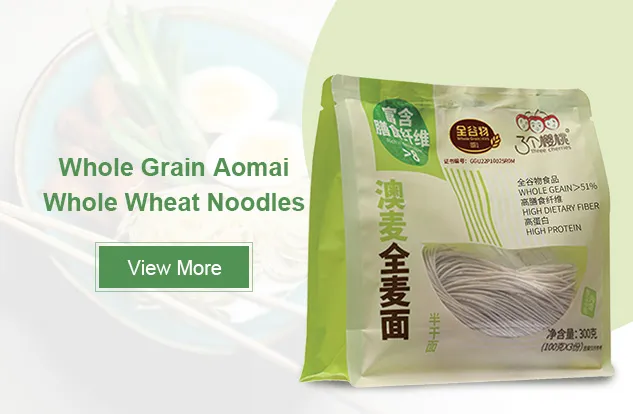wet noodles chinese
The Significance of Wet Noodles in Chinese Cuisine
Chinese cuisine is a vibrant tapestry woven from various regional influences, flavors, and techniques. One of the most intriguing elements of this culinary world is the humble yet versatile wet noodle. For many, wet noodles evoke memories of family gatherings, late-night street food hunts, and the rich culture surrounding food in China. This article delves deep into the significance of wet noodles in Chinese cuisine, exploring their varieties, preparation methods, and cultural importance.
A Brief Introduction to Wet Noodles
Wet noodles, or soup noodles, are a staple in many Chinese dish repertoires, characterized by their soft and chewy texture, making them a favorite among noodle lovers. Unlike their dry counterparts, wet noodles are typically cooked and served in a broth or sauce, allowing them to beautifully absorb flavors. Made predominantly from wheat or rice flour, these noodles come in various shapes and sizes, catering to diverse regional preferences.
Varieties of Wet Noodles
China's vast culinary landscape boasts an abundance of wet noodle varieties. Some of the most notable include
1. Wonton Noodles (云吞面) Originating from Cantonese cuisine, wonton noodles are thin egg noodles served with delightful wontons—dumplings filled with minced meat, shrimp, or vegetables. Typically served in a clear broth, this dish is a comforting favorite enjoyed both on special occasions and in everyday life.
2. Beef Noodle Soup (牛肉面) Hailing from the northwest of China, this dish combines rich, tender beef with handmade wheat noodles, immersed in a hearty broth flavored with spices such as star anise and ginger. It captures a perfect balance of savory and aromatic elements.
3. Lan Zhou Noodles (兰州拉面) A prominent feature of the Muslim Hui culture in China, these hand-pulled noodles are celebrated for their remarkable texture and elasticity. Often served in a flavorful beef broth and topped with slices of beef, scallions, and cilantro, this dish has gained popularity beyond its regional origins.
wet noodles chinese

4. Dan Dan Noodles (担担面) A Sichuan classic, Dan Dan noodles are characterized by their spicy, tangy sauce made from sesame paste, soy sauce, and chili oil. Served with minced pork and garnished with crushed peanuts, this dish brings a delicious balance of heat and umami.
Preparation Techniques
The preparation of wet noodles is an art form in itself. From the kneading of the dough to stretching and rolling it into the desired form, each step requires precision and skill. In many regions, street vendors and chefs alike take pride in their noodle-making techniques. For instance, hand-pulling noodles—where the chef skillfully stretches and folds the dough until it forms long, thin strands—is a time-honored method that showcases both tradition and craftsmanship.
Once the noodles are ready, cooking them to perfection is crucial. Consistency is key; overcooking results in a mushy texture, while undercooking leaves them too chewy. The ideal wet noodle should have a delightful bite that complements the accompanying broth or sauce.
Cultural Significance
Wet noodles play a significant role in Chinese culture and daily life. They symbolize comfort, family, and togetherness, often served during family gatherings and festivals. For many, a bowl of steaming hot noodles evokes feelings of nostalgia, reminding people of home-cooked meals shared with loved ones.
Furthermore, noodles are often associated with longevity and good fortune, making them a traditional dish served during birthdays and special celebrations. The act of sharing a bowl of wet noodles is a testament to Chinese hospitality and the values of community and connection.
Conclusion
Wet noodles are more than just a meal in China; they are a reflection of the country’s rich culinary heritage, regional diversity, and cultural values. With countless varieties and preparation methods, they have secured their place at the heart of Chinese dining experiences. Whether enjoyed in a bustling market, a family kitchen, or a fine restaurant, wet noodles continue to bring joy and warmth to those who indulge in them—one bowl at a time.
-
Unleash Your Inner Chef with Delectable Italian Pasta CreationsNewsAug.01,2025
-
Savor Health and Flavor: Irresistible Soba Noodles for Sale Await!NewsAug.01,2025
-
Nourish Your Body with Premium Organic Ramen - A Culinary Delight AwaitsNewsAug.01,2025
-
Elevate Your Dishes with Our Exquisite Kinds of Egg NoodlesNewsAug.01,2025
-
Dive into Flavorful Convenience with Our Ramen OfferingsNewsAug.01,2025
-
Discover Exquisite Types of Naengmyeon and Chilled Soba NoodlesNewsAug.01,2025
-
Is Whole Wheat Pasta Healthy?NewsMay.30,2025
Browse qua the following product new the we

















































































































